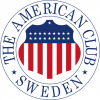Detailed Synopsis:
Because of the disparities in size and political systems, direct comparisons between the two countries are very difficult. However, both systems can be seen as ‘models’, with particular strengths and weaknesses.
The historical development and political context of both systems has helped define their specific features. More Read More importantly for this discussion, Sweden and America have at various times adopted (or tried to adopt) aspects of each other’s educational system. Mutual interest in each other’s schooling began in earnest during the great Scandinavian emigration to America around the turn of the 20th century (about one-quarter and one-third of the population of Sweden). The resulting trans-Atlantic communication between families and communities led to inevitable comparisons and critiques of the various school systems.
Most recently, President Trump’s controversial Secretary of Education, Michigan millionaire Betsy DeVos, a radical proponent of school choice and for-profit public schools, has looked at Sweden’s “friskolor” as a possible model for US “charter schools”. Earlier, the Swedish “friskolor” introduced in 1992 during a conservative-liberal government in Sweden, had been impressed with the emerging ‘free choice model’ of charter schools in America during the Reagan and Bush administrations. During the 1930s President Franklin D. Roosevelt and his liberal Democrats introduced Social Security and other federal ’social safety net’ programs and were very interested in Sweden’s model of Social Democracy. Alva Myrdal returned to Sweden in the 1930s from the US impressed by the Progressivists and John Dewey’s “comprehensive school” where all students and educational programs were housed under one roof. She and others successfully worked to introduce this kind of centralized school system in Sweden. This mutual educational interest between the two countries has sometimes led to regrettable misunderstandings and sometimes to real innovations.
This educational ‘cross pollination’ will undoubtedly continue, so it is important to recognize and understand these educational influences, and look at them from multiple points of view, ranging from the political and economic to the sociological and pedagogical.
Panel:
Dag Blanck, Director Swedish Institute for North American Studies, Uppsala University, Director of the Swenson Swedish Immigration Research Center at Augustana College
Russell Bradshaw, Associate Professor, Department of Middle & High School Education, Lehman College, City University of New York.(Retired 2016)
Elisabeth Hultqvist, Professor, Pedagogics, Stockholm University & University of Wisconsin, Madison
Moderator: Julie Lindahl, President, American Club of Sweden
When: Tuesday, September 26th, 18.00-19.30 panel discussion, 19.30-20.30 mingle and refreshments
Where: Faculty Club, Stockholm University, Frescativägen 22, Stockholm
Cost & Payment: 100 kr for members, 150 kr for guests, 50 kr for students. Cash (exact amount please) or Swish.
Cancellation Policy: No-shows will be invoiced 200 kr.
Inquiries: events@americanclub.se
